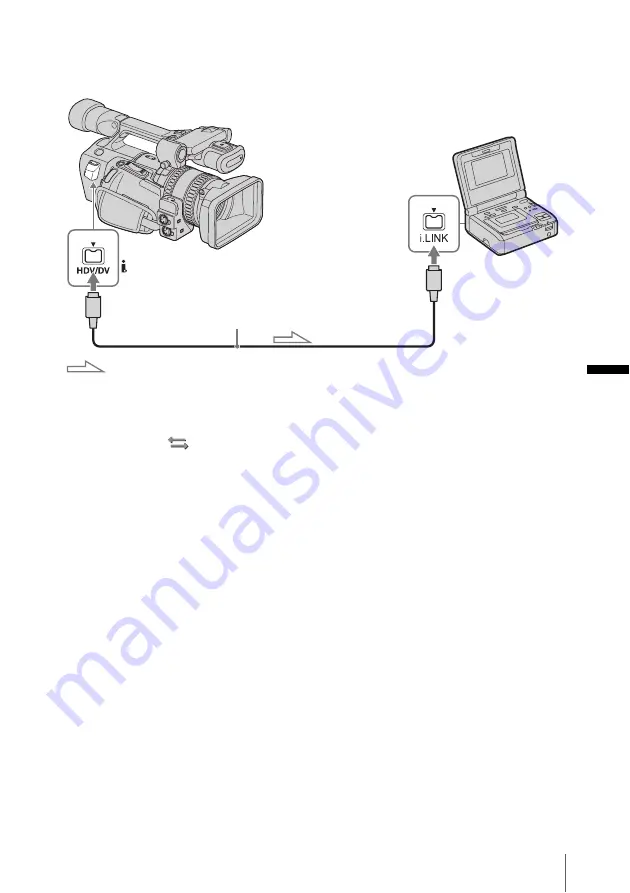
Du
b
b
in
g
/E
d
itin
g
Dubbing/Editing
91
To dub to a DVCAM (DV) device
Connect your camcorder to a VCR using an
i.LINK cable (optional).
To select the video format to be dubbed
The video format to be dubbed depends on the
settings of [VCR HDV/DV] (p. 71) and [i.LINK
CONV] (p. 74) on the
(IN/OUT REC)
menu. Before setting these menu items,
disconnect the i.LINK cable.
• When [VCR HDV/DV] is set to [AUTO],
[HDV
t
DV CONV] to [ON], and [AUDIO
LOCK] to [LOCK MODE] in [i.LINK
CONV], HDV pictures are dubbed as audio-
locked signals, and DV pictures are dubbed as
they are, disregarding the [AUDIO LOCK]
setting.
• When [VCR HDV/DV] is set to [AUTO],
[HDV
t
DV CONV] to [ON], and [AUDIO
LOCK] to [UNLOCK MODE] in [i.LINK
CONV], HDV pictures are dubbed as audio-
unlocked signals, and DV pictures are dubbed
as they are, disregarding the [AUDIO LOCK]
setting.
• If the tape was recorded with the HDV and
DVCAM (DV) formats mixed, set [VCR
HDV/DV] to [DV] to dub only pictures in the
DVCAM (DV) format. Pictures in the HDV
format will be dubbed as blank portions, so
neither picture nor sound will be dubbed.
b
Note
• If you change the settings of [VCR HDV/DV] and
[i.LINK CONV] with the i.LINK cable connected,
the video device may not be able to recognize the
video signal from the camcorder at the time of
dubbing.
• If [HDV
t
DV CONV] is set to [OFF] in [i.LINK
CONV] while [VCR HDV/DV] is set to [AUTO],
pictures recorded in the HDV mode will be recorded
as blank portions, so neither picture nor sound will
be recorded.
• When [VCR HDV/DV] is set to [HDV], the
connected DVCAM (DV) device cannot recognize
pictures, so pictures will be dubbed as blank
portions.
• When [VCR HDV/DV] is set to [AUTO] and the
signal switches between HDV and DVCAM (DV),
the picture and sound disappear temporarily.
i.LINK cable (optional)
HDV/DV jack
Signal flow
i.LINK jack
i.LINK compatible
devices
















































